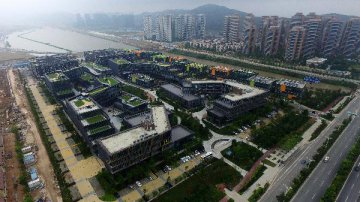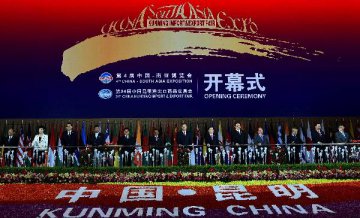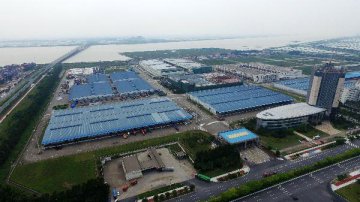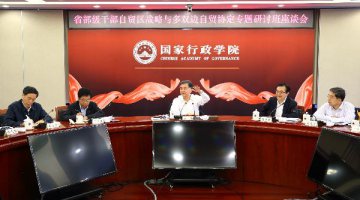
Free trade zone (FTZ) plans of Sichuan, Zhejiang and Hubei have been reported to the Ministry of Commerce (MOC). As the plans have entered the stage of finalizing, the outline of the seven new FTZs has also gradually emerged.
Zhoushan of Zhejiang Province aims at promoting commodities trade liberalization; Hubei focuses on facilitating the rise of China's central region and the Yangtze River Economic Belt development; Henan eyes on constructing international logistics distribution center; Sichuan's main task is to build new heights of opening up in inland area.
In August, Liaoning, Zhejiang, Henan, Hubei, Chongqing, Sichuan, Shaanxi have been approved to construct the third batch of FTZs after Shanghai, Fujian, Guangdong and Tianjin.
The plans show that each one of the third batch of FTZs has its unique positioning.
According to the plan of Zhejiang Province, Zhoushan free trade port, positioned as a commodity FTZ, will take the whole industry chain of oil products as the core, mainly designed to implement the central government's request to "explore the ways of building of the Zhoushan free trade port area", promote the commodity trade liberalization and improve its ability of global commodity allocation.
Zhoushan has established a "three steps" strategy to successively build comprehensive bonded zone, FTZ and free port, with the free port as the ultimate goal, which covers the whole Zhoushan city.
At the mean time, as a key part of Zhoushan free trade port, China's State Council approved the plan to set up the Zhoushan river-sea transport service center in April this year, which includes the new district of Zhoushan islands, Beilun of Ningbo city, Zhenhai, Jiangdong, Jiangbei, with a land area of about 2,500 square kilometers and a sea area of about 21,000 square kilometers.
According to Zhoushan Municipal Development and Reform Commission, the core of the FTA is to develop commodity trade liberalization and the strategic target is to promote global commodity allocation.
For the inland FTZ of Hubei Province, it will focus on coordinating with the strategy of rise of China's central region and developing the Yangtze River Economic Belt.
The overall plan of Hubei FTZ has been reported to the MOC in October. In the plan, the FTZ's positioning is orderly undertaking industrial transfer, constructing bases of strategic emerging industries and high-tech industries, contributing to implementing the strategy of Central China's rise and building Hubei as a model in the Yangtze River economic belt construction, finally realizing trade facilitation, investment liberalization, regulation by the law, and building first-class international business environment.
Hubei FTZ's total area declared to the MOC is 120 square kilometers, including 70 square kilometers in Wuhan city, 28 square kilometers in Yichang city and 22 square kilometers in Xiangyang city. As a result, different from the initial plan, the Wuhan part of the FTZ is located in Guanggu, sources disclosed.
China's Minister of Commerce Gao Hucheng recently said that the seven FTZs will continue to focus on import system innovation, with existing FTZs' pilot contents as the main theme, and combine local characteristics and strategic needs to increase differentiated pilot tasks.
Lu Jinyong, professor at School of International Trade and Economics of the University of International Business and Economics and Tianjin FTZ plan drafting team member, said that designing of the functions and contents the third batch of the FTZs is very important.
Compared to the first two batches of FTZs, the third batch should be coherent and also make breakthroughs.
In his view, the third batch FTZs should have the functions to promote reform and opening up in the inland areas but also connect with the Belt and Road Initiative and other national strategies, including the new normal national economic development, supply side reform, reducing overcapacity and economic restructuring.
























Latest comments